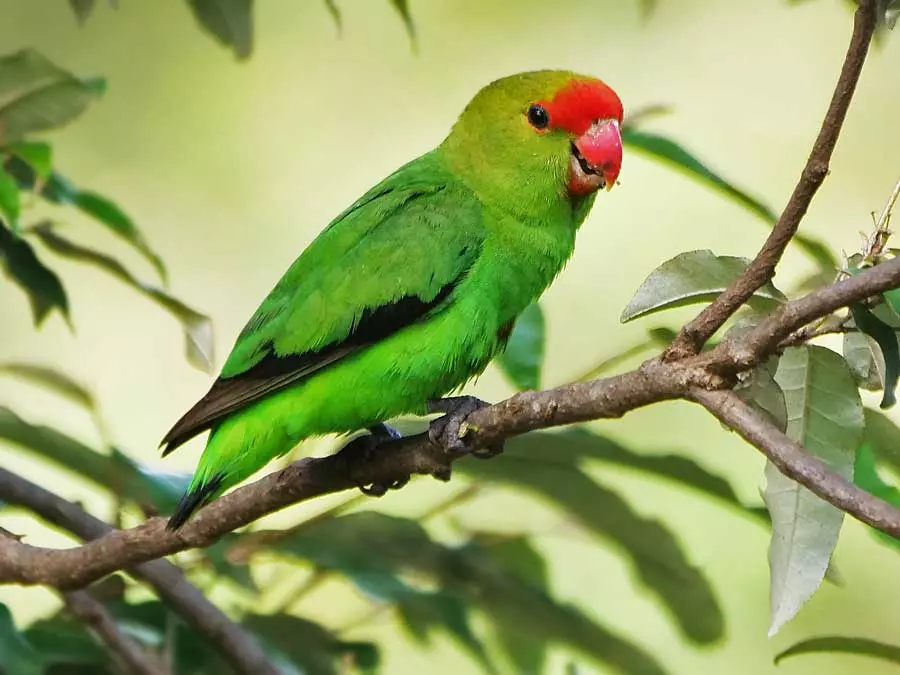
The black-winged lovebird (Agapornis taranta), also known as the abyssinian lovebird, is a unique and fascinating bird species that is native to the mountainous regions of Ethiopia and Eritrea. This bird is known for its striking appearance and captivating behaviors, making it a popular choice for pet owners and bird enthusiasts alike. In this comprehensive guide, we will dive into the world of the black-winged lovebird, exploring its physical features, natural habitat, behavior, diet, and its suitability as a pet bird.
Description and Appearance
Colors and Patterns
The black-winged lovebird is one of the most distinct lovebird species due to its unique coloration. The adult male is predominantly light green with red feathers on its red forehead and a black tip on its tail. The wing feathers are typically black, with the underwing coverts being brownish-black. The adult female is similar in appearance to the male, but has a smaller bill and green instead of red feathers on the forehead.
Juvenile birds of abyssinian lovebird are similar to the adult female but have a darker brown head and a grey beak. The birds undergo their first molt at around six months of age, during which their adult plumage begins to develop.
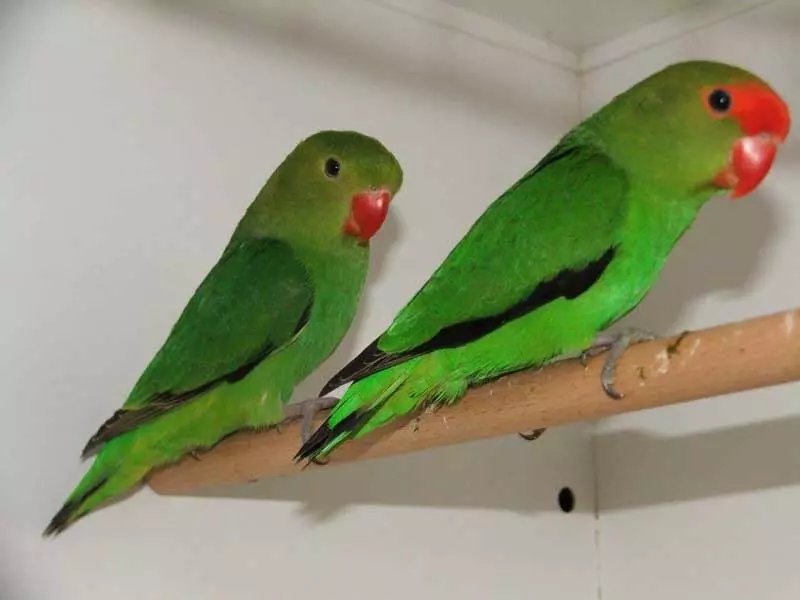
Size and Weight
Agapornis taranta, belonging to a sexually dimorphic and captivating species, are among the largest lovebirds, measuring about 16.5 centimeters (6.5 inches) in length and weighing between 45 and 60 grams (1.6 and 2.1 ounces).
Distribution and Habitat
The abyssinian lovebird is native to the southwestern highlands of Ethiopia and southern Eritrea. They inhabit mountainous areas between 1,600 and 3,200 meters (5,200 and 10,500 feet) above sea level. Their preferred habitat includes juniper woodlands, sycamore fig forests, and other areas with dense tree cover. Abyssinian lovebirds are known to roost in tree cavities and make their nests in the crevices of branches or trunks.

Behavior and Social Structure
Breeding
Abyssinian lovebirds are avid nest builders and will use twigs, leaves, and other debris to construct a thick layer inside their chosen nest box or tree cavity. The breeding season typically occurs between February and June, with the female laying a clutch of 3 to 8 white eggs. The female incubates the eggs for about 23 days, and the chicks fledge after about 45 days.
During the breeding season, their striking appearance can display even more variety due to the occurrence of color mutations in some individuals.
Communication
Abyssinian lovebirds are known for their high-pitched, shrieky notes and twittering notes that they use to communicate with other lovebirds like the black-masked lovebird. They can also produce pleasant, softer sounds, especially when interacting with their mates or when they feel comfortable in their environment.
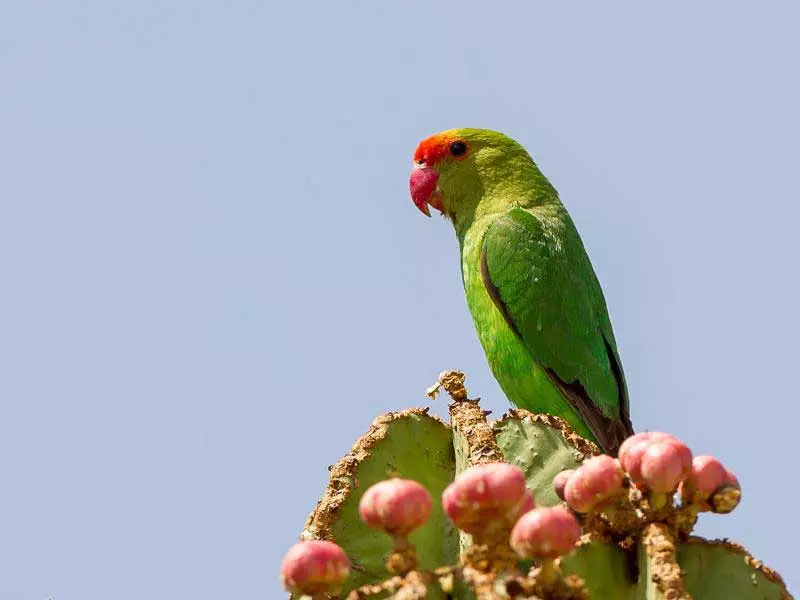
Diet and Feeding Habits
In the wild, black-winged lovebirds have a diverse diet that consists mainly of seeds, fruits, and berries. They have been observed feeding on juniper berries, fig fruit, and various other plant materials. In addition to their wild diet, these birds may also consume insects and small invertebrates.
When kept as pets, abyssinian lovebirds should be fed a balanced diet that includes commercial pellets, fresh fruits, vegetables, and seeds such as millet, hemp, and sunflower seeds. Providing additional sunflower seeds and other seeds with a higher fat content can be beneficial during the breeding season or when the bird is molting.
Threats and Conservation Status
The black-winged lovebird is currently listed as Least Concern on the IUCN Red List of threatened species. The primary threats to these birds include habitat loss due to deforestation and agricultural expansion. However, their populations appear to be stable, and they have been observed adapting to some degree of habitat change.
Conservation efforts are focused on preserving the abyssinian lovebird natural habitat, as well as monitoring populations and raising awareness about the importance of protecting these beautiful and fascinating birds.
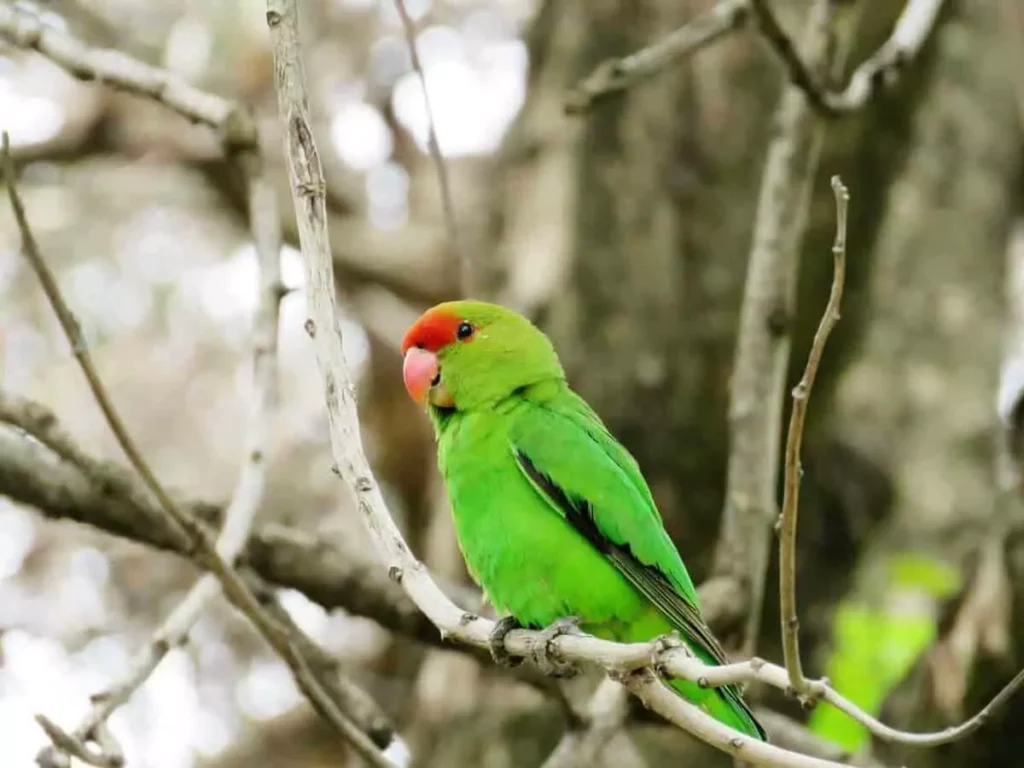
Black-Winged Lovebirds as Pets
While not as common as other lovebirds, the black-winged lovebird can make a wonderful pet for the right person. They are known for their pleasant disposition and captivating behaviors, making them a joy to observe and interact with. Here are some key aspects to consider when keeping a black-winged lovebird as a pet:
Housing
The Agapornis taranta require more than just a small cage; they need a roomy cage or an aviary to thrive in captivity. The cage should be large enough for the bird to fly and exercise, as well as have space for perches, toys, and a nest box. These birds can tolerate cold weather to some extent, but should be protected from drafts and extreme temperature fluctuations.
Diet
As mentioned earlier, a balanced diet is essential for the health and well-being of your black-winged lovebird. Provide a variety of fresh fruits, vegetables, seeds, and commercial pellets to ensure they receive all the necessary nutrients. Supplementing their diet with vitamin C can also be beneficial for them to have a good health, as it is an important component of their wild diet.
Interaction and Socialization
Black-winged lovebirds are social birds and can become quite attached to their owners. Regular interaction and socialization with their human caretakers are essential for their mental and emotional well-being. These birds are also known to get along with other birds such as cockatiels and smaller parrots like macaws, although they may display some territorial behaviors during breeding season.
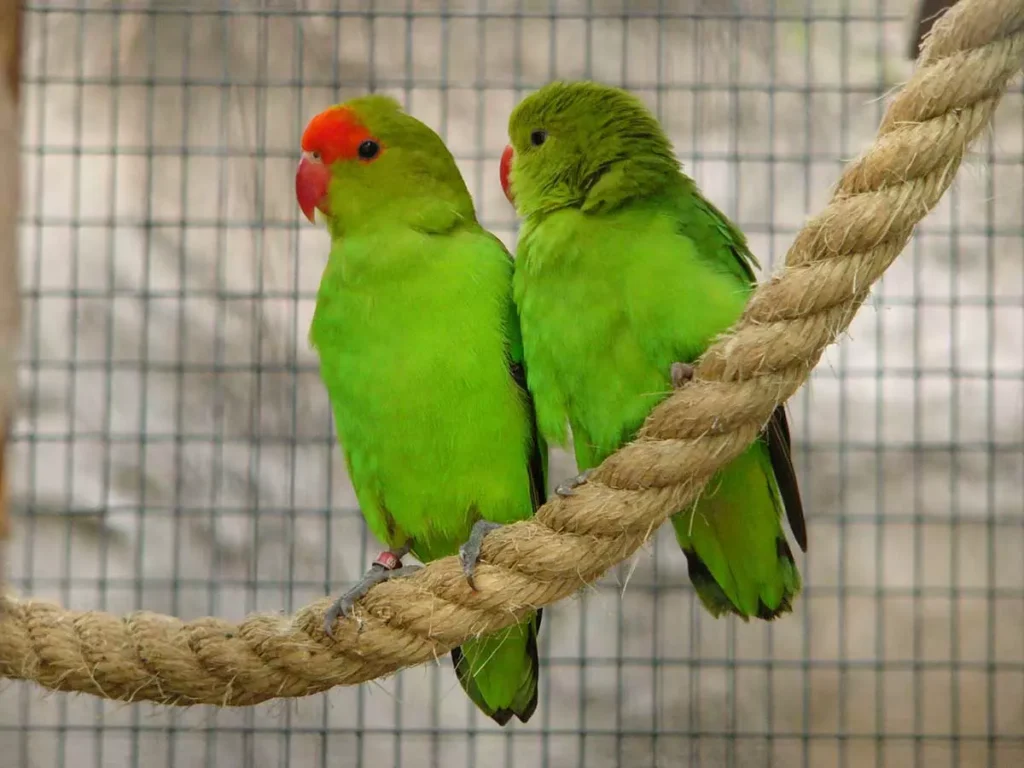
Conclusion
The black-winged lovebird, with its typically green plumage, unique black markings, and stunning red forehead, is a captivating and distinctive bird species that offers a wonderful opportunity for bird enthusiasts to observe and learn about their fascinating behaviors and striking appearance. Boasting dark brown to black feathers and shorter wings compared to other agapornis species, these birds can often be found in small flocks and are known to utilize nest boxes in the wild. Whether observed in their native habitats or kept as cherished pets, the black-winged lovebird is sure to capture the hearts of those who encounter them. By understanding and appreciating this beautiful lovebird called Agapornis taranta, we can work together to ensure their continued survival both in the wild and as cherished pets around the world.
